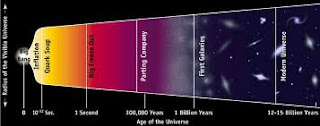There are circumstances that I would woke up early dawn and as I looked up in the sky, I would notice this star that seems to be the brightest object up above. I could even remember asking about that brightest star to my elder ones long ago when I was still a small child, and they would answer back “it’s not a star, actually it’s Venus, a planet”. From then on whenever I see Venus in the night sky, I grew more curious about this planet.
According to my past lessons at school and my personal research, I have gathered these following facts about this planet.
From the eight planets in the solar system, Venus is the second planet in distance from the Sun, but the hottest planet in the solar system, hotter than Mercury. Its hellish surface has broiling temperatures that make rocks glow red under a crushing atmosphere that shrouds the planet in thick layers of clouds. In here, the temperature at the surface ranges from -30˚C to 475˚C. Carbon dioxide helps to produce a powerful greenhouse effect and the nearness of the planet to the sun raises the temperature on the surface to more than 475˚C which is high enough to melt lead.
Except for the Sun and the Moon, Venus is the brightest object in the sky. It is often called the morning star when it appears in the east at sunrise and the evening star when it is in the west at sunset. When viewed through a telescope, Venus exhibits phases like the Moon. Venus’s full phase appears smaller and dimmer because it occurs when the planet is on the far side of the Sun from Earth. The phases and positions of Venus in the sky repeat every 1.6 years. The planet was named for Venus, the Roman goddess of beauty.
Venus is nearly the same size as Earth, but takes 243 days to rotate on its axis in the opposite direction, longer than it takes to revolve around the sun. It also lacks a magnetic field and a moon. Why conditions on Venus and Earth are so different remains a major puzzle for planetary scientists. Venus circles the Sun at a distance of 108 million km (67 million mi) in a little over seven months (about 225 days).
It has a diameter of 7584 miles and like Uranus; it spins clockwise or retrograde unlike the spin of the rest of the planets which is counterclockwise. The temperature at the surface ranges from -30˚C to 475˚C making it the hottest planet. Carbon dioxide helps to produce a powerful greenhouse effect and the nearness of the planet to the sun raises the temperature on the surface to more than 475˚C which is high enough to melt lead.
 Swirling clouds of sulfur and sulfuric acid obscure Venus’s surface and inhibited study of the planet from Earth until technology permitted space vehicles, outfitted with probes, to visit it.
Swirling clouds of sulfur and sulfuric acid obscure Venus’s surface and inhibited study of the planet from Earth until technology permitted space vehicles, outfitted with probes, to visit it. The extreme conditions on Venus make it highly unlikely that humans will ever set foot on this planet—there are no current plans for manned exploration. If humans ever reached Venus, they would weigh about the same as on Earth but would otherwise find a totally alien world requiring heavy protection from heat and pressure. Venus may be the closest thing in the solar system to the way humans have imagined hell.
Can you believe these? All these information about Venus is beyond doubt incredible. I have never imagined that my favorite star, which is actually a planet, in the night sky is likely as hell because of its characteristics and attributes.
It is also my dream since I was small that I would travel outer space but I don’t know if this is still likely to happen. I’m not saying I’m losing hope but I’m just sticking to reality. Anyway, if circumstances allowed, and I have given a chance, I will really be delighted because there are only few who are lucky enough to witness the great, mysterious outer space.
These only prove that the solar system is stunning and marvelous if you would only discover and know more about its beauty and splendid features.
The solar system is never ordinary or predictable, is it?
























